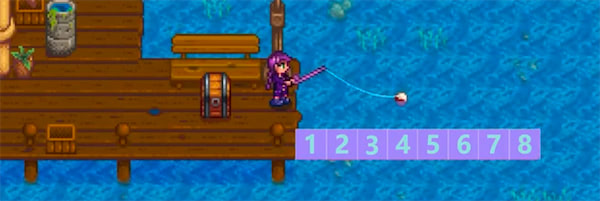The Art of Fishing in Stardew Valley: A Deep Dive into Casting Techniques and Leveling Up Faster
In the charming pixelated world of Stardew Valley, fishing is not just a leisure activity—it’s an essential skill to master, whether you’re aiming for Golden Walleyes or you’re on a mission to catch that elusive Legend fish. The art of fishing seems simple but hides a plethora of mechanics that can greatly affect your catch and the speed of your leveling. In this detailed analysis, we explore the mechanics of fishing, specifically focusing on casting techniques and how to optimize your distance for quicker leveling.
The Intricacies of Casting
Casting in Stardew Valley might seem like a straightforward action, but various factors come into play. Here are some nuances that seasoned anglers should consider:
Casting Direction Matters
Firstly, the direction in which you cast affects the distance and the kind of fish you’ll likely reel in. Horizontal casting (left or right of your character) generally covers more distance than vertical casting (up or down). Plus, horizontal casting increases the chance of catching higher quality fish, reducing the chance of catching trash items.
Observing Fishing Zones
It’s crucial to notice the terrain where you’re fishing. For example, the seaweed patches next to Willy’s Fish Shop can act as markers. Observing these can help you gauge the distance your bobber has traveled. Depending on your fishing level, a full-powered horizontal cast can cover a specific distance, usually landing at the center of a tile (a tile is the unit that makes up the game’s grid system).

Cast Distance by Fishing Level
Each fishing level alters the potential distance you can cast. Contrary to popular belief, leveling doesn’t precisely add one full tile to your casting distance. For instance, at level 0, a full-power cast can reach a distance of 3.5 tiles horizontally. At level 1, it’s 4.5 tiles, and so on. So, strictly speaking, you do gain an extra tile with each level, but the base isn’t necessarily a whole number.
To Charge or Not to Charge
Minimizing Charge for Max Benefits
If you lightly tap the casting button, your bobber will land at a distance of 1.5 tiles, irrespective of how many power bars are showing. Charging beyond two bars starts to increase the distance. For example, at level 8, where a full-power cast reaches 6.5 tiles, the increments are linear past the initial two bars. So, a 3-bar charge reaches 2.5 tiles, 4 bars reach 3.5 tiles, and so on.
Efficiency is Key
A common question is: “What’s the optimal power to achieve the best distance?” The answer can be found in considering the ‘Gold Star Rate,’ which signifies the quality of fish you are likely to catch. For instance, at level 10, you can still achieve a 90% Gold Star Rate by casting into 4-tile deep waters, saving the need for full power.
This is important because casting at maximum power every time is not only unnecessary but also inefficient. So, what’s the ideal casting power? Below are some numbers:
- Level 0: Save 1.25 bars
- Level 1: Save 0.83 bars
- Level 4: Save 1.88 bars
- Level 8: Save 2.5 bars
Vertical vs. Horizontal Casting
When it comes to vertical casting, a light tap will take the bobber 1.7 tiles. Unlike horizontal casting, the distance doesn’t begin to increase until the fourth power bar. This brings us to the conclusion that horizontal casting has a more significant advantage over vertical casting in almost all aspects.
Level Doesn’t Always Equal Speed
For players who are just starting, you’ll notice that even a full-power cast at levels 0 and 1 doesn’t go very far. In such cases, a light tap might be just as effective for leveling up.
Community Tests and Further Studies
The distances mentioned in this article are approximate, not accurate to the second decimal point. Players are encouraged to conduct their own tests for even more precise information.
Conclusion
Fishing in Stardew Valley is not merely a click-and-wait game; it’s a skill that requires understanding the finer mechanics, especially when it comes to casting. By understanding how far and where to cast, you can not only enhance your fishing experience but also level up more efficiently. Whether you are a novice angler or an expert fisherman looking to refine your skills, this guide is your first step to mastering the waters of Stardew Valley.
Now, grab your Iridium Rod, bait, and tackle, and head to your favorite fishing spot in Stardew Valley. Happy fishing!
Note: This article is based on in-depth analysis and community insights. Your personal experience may vary, and it’s always good to experiment and form your own strategies.